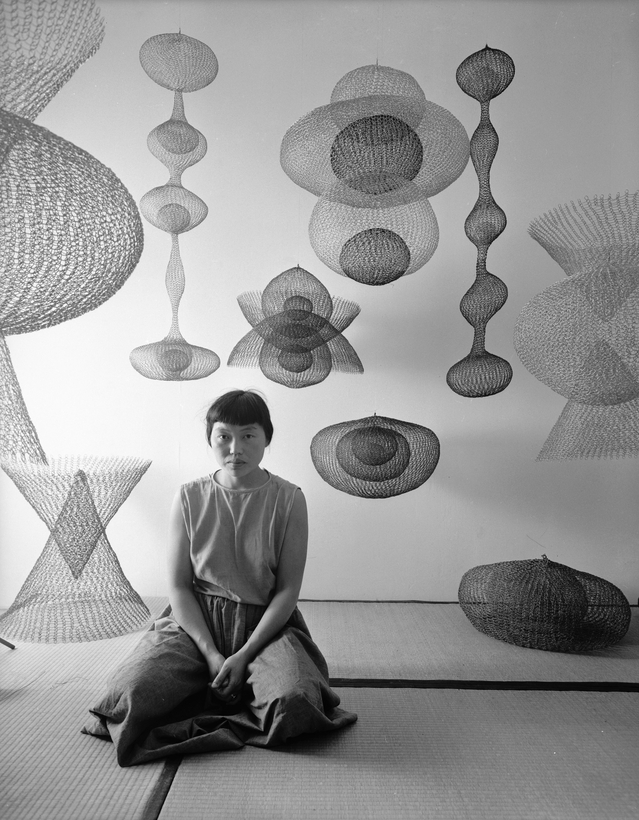Encountering an installation of Ruth Asawa’s abstract sculptures is like entering an enchanted garden where nature, industry, art, and craft have fantastically merged. Suspended from the ceiling, made of metal wire looped and tied into a sinuous mesh, the works consist of interlocking, often nested spheres, lobes, bubbles, and teardrops. The drooping, biomorphic structures suggest translucent embryos and wombs, iridescent sea creatures, hanging tiered baskets, seedpods, spiderwebs, and onion domes. Delicate and ebullient, they cast ethereal reflections and shadows, but they are also sometimes ominously large, their knitted skins resembling chain mail.

Asawa’s sculptures, and the associations they summon, reflect the diversity of her experiences and influences. Her parents were Japanese immigrants who had a small farm in Norwalk, California, where she was born in 1926, the fourth of seven children. In 1942, during World War II, the family was held in a Japanese internment camp, where, behind barbed-wire fences, Asawa studied with a Japanese-American animator from Walt Disney Studios.
Upon her release, she trained as an art teacher. Although that career was initially thwarted by racial prejudice, she eventually became a pioneer in arts education. During an international arts-study trip to Mexico, Asawa learned to hand-loop wire baskets. Intending to study weaving with Anni Albers, she enrolled at the progressive Black Mountain College, where she was mentored by Josef and Anni Albers, the choreographer Merce Cunningham, the architect Richard Buckminster Fuller, and the pianist Charlotte Schlesinger.
Asawa’s signature wire sculptures—organic forms that fuse Western modernism and traditional Japanese austerity—have long enjoyed a loyal following, but now she’s finally getting international attention. Marilyn Chase’s 2020 biography, Everything She Touched: The Life of Ruth Asawa, draws extensively on the words of family, friends, and teachers, and weaves together an extraordinary portrait.

So, too, should the retrospective debuting at Modern Art Oxford, in the U.K., and traveling to the Stavanger Art Museum, in Norway. The Museum of Modern Art Oxford’s Emma Ridgway (co-curator with S.T.A.’s Vibece Salthe) told me, “I have titled the exhibition ‘Citizen of the Universe’ because she describes herself that way in a love letter in 1948: ‘I no longer identify myself as a Japanese or an American’ [but] ‘a citizen of the universe.’ Her understanding that humanity and identity transcend race and class divisions enabled Asawa to overcome the discrimination that had shaped her entire life. It conveys a message of enacting change whilst accepting reality with compassion.” —Lance Esplund
“Ruth Asawa: Citizen of the Universe” is on view at Modern Art Oxford through August 28. The exhibition then travels to the Stavanger Art Museum, in Norway, where it will open on October 1
Lance Esplund is the author of The Art of Looking: How to Read Modern and Contemporary Art and an art critic for The Wall Street Journal


 Discover
Discover